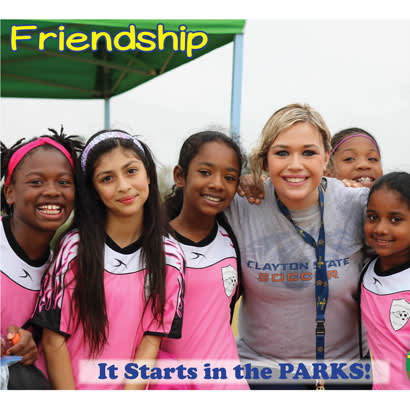
The concept of inclusion can be weighted and thorny, but ultimately, it tells us who is entitled to participate. The inverse can be just as powerful: Being excluded sends a clear message about who is not welcomed or, worse, not even considered.
Images play a powerful part in communicating the message of inclusion. Consider the photo frames at the local big-box store. Many of us browse the shelves looking for the right color, size and shape of the frame to display our fondest memories. Retailers try to help us decide by including pictures of families, celebrating life and familiar milestones. The goal is for us to imagine ourselves, our families and our friends in those actual frames.
For people of color and the differently abled, this exercise takes a little more effort. Few of the pictures in store-bought photo frames feature same-sex families, Quinceañera celebrations or interracial wedding receptions, although they are as commonplace and ubiquitous as are the stores that carry the merchandise. Members from these segments of society must strain to see themselves as a part of “normal life” represented in those frames.
The same comment could have been made about the marketing products created and distributed by the Clayton County Parks & Recreation Department. The branding efforts of the department, which serves a suburb just south of Atlanta, have historically targeted white members of the community, even though the most recent census data show that people of color comprise more than 70 percent of the population. Notwithstanding, print and electronic media routinely and consistently did not include images of African-American, Asian and Hispanic citizens in both internal and external marketing collateral. The result was the projection of a white citizenry, and an alienation of the majority of Clayton County constituents.
Rebranding
In 2016, the Clayton County Parks & Recreation Department adopted a new tagline, “It Starts in the PARKS,” and embarked on an initiative to rebrand itself. This created an opportunity to intentionally ensure that all imagery reflected the community, affirming its value and making a clear statement about who is welcome to take part in the program offerings.
The initial step was to define the “It” in the tagline. The objective was to promote the benefits derived from the park and recreation experience. During a brainstorming session, staff members identified several rewards enjoyed by patrons and eventually settled on 12 values that described the experience offered, including friendship, respect, leadership, fun and fitness. The challenge was to present those values in an accessible manner for public consumption and appreciation, so a decision was made to capture images of constituents using the department’s programs and facilities and connect those photos to one of the corresponding values.
The new tag line would accompany each image and chosen value on a series of posters, illustrating the values gained from the park and recreation experience, demonstrated by the engagement of park participants.
Representation Matters
Prior to production and distribution of the poster series, a focus group was convened to solicit feedback on the campaign. The group, composed of citizens who regularly patronized the department, was asked to brainstorm words it associated with parks and recreation: like the exercise performed earlier by the department staff members. This proved to be a critical step in the process.
Focus group members were blunt. They liked the values selected for the campaign but were highly critical of the images chosen to illustrate those ideals. Each participant saw him- or herself as representative of those values, and they wanted to see themselves reflected in the posters. However, the photographs depicted a very narrow, homogenous constituency. The discussion was enlightening and humbling. Several pictures showed kids playing sports, but older focus group members rejected the idea that parks and recreation was only about youth athletics, reminding us that they enjoy walking the nature trails. Some women in the group explained that the young, ultra-fit bodies in the photos did not represent their friends, who regularly took aerobics classes at the recreation centers.
The group told us, in no uncertain terms, that the images were cherry-picked stereotypes of park and recreation participants often depicted in glossy, high-end chamber of commerce brochures, and they did not reflect the real Clayton County community. The participants pointed out that most of the department’s patrons were from communities of color, but most of the posters overlooked this fact. They were correct. The photos were curated to portray Clayton County like one of those communities promoted by Madison Avenue marketing firms, using traditional aesthetics as currency. This was clearly the result of our own internal bias.
Based on the recommendations made by the focus group, additional photos were added, and the values were revised. Ultimately, the poster series grew to a total of 20 images with corresponding ideals, including several that previously had not been considered.
The posters were printed and distributed throughout the park system: placed in recreation centers, park clubhouses, conference rooms, public libraries and elementary schools. The community was bombarded with the message that important values can be learned through participation in park and recreation programming, and every constituency is welcome. The response to the campaign was overwhelming. Through direct feedback from patrons, we learned that people saw themselves in the images, and they felt an invitation had been extended directly to them.
While our campaign initially collected images of Clayton County, we had not actually captured the community. When we speak of inclusion in society, we often point to the diversity of people gathered in a meeting space or assembled on a team. Too often, we forget that the manifestation of that diversity begins with a personal invitation to participate. How we promote ourselves to the public can go a long way in this regard. This was the lesson we learned through our branding campaign in the Clayton County Parks & Recreation Department. Inclusion: “It Starts in the PARKS!”
Koboi M. Simpson, CYSA, is the Deputy Administrator – Athletics for Clayton County Parks & Recreation.

